#comte de rouen
Explore tagged Tumblr posts
Text

Rollo (died in 933), Count of Rouen and first ruler of Normandy.
#royaume de france#vikings#rollo#rollo the walker#duke of normandy#count of rouen#duchy of normandy#full length portrait#in armour#duché de normandie#Rolf le Marcheur#rollon#Hrólfr#jarl des Normands de la Seine#comte de rouen#full-length portrait#engraving#rollonides#maison de normandie#ducs de normandie#Haut Moyen Âge#middle ages#house of normandy#kingdom of france
22 notes
·
View notes
Text
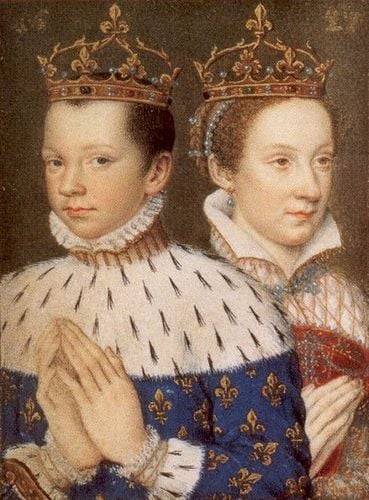
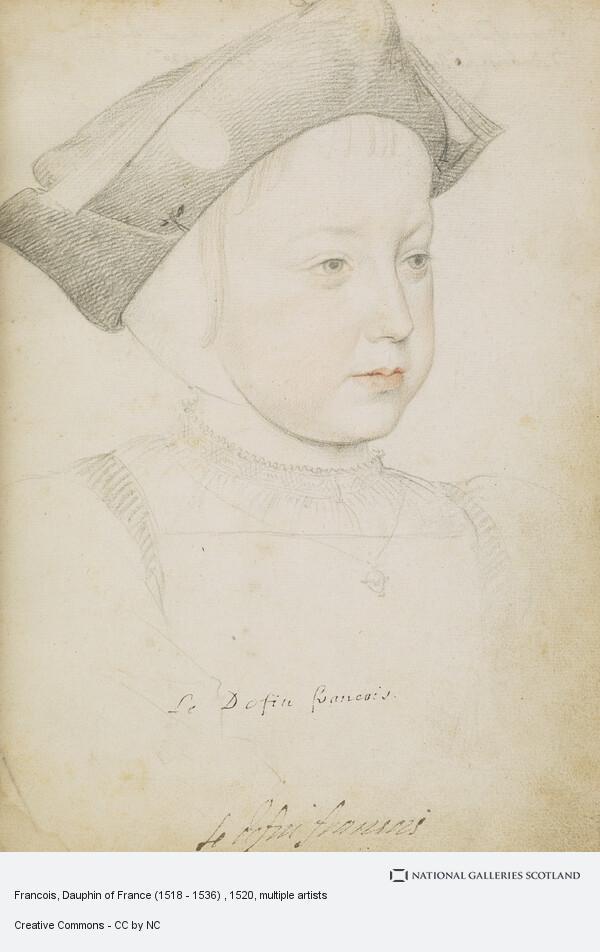
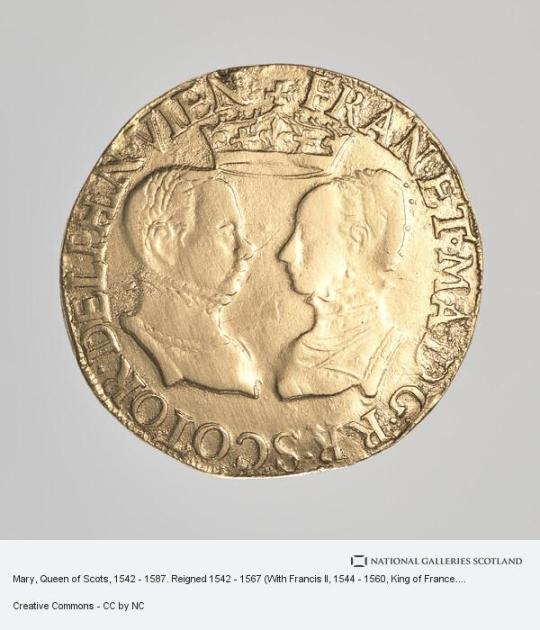
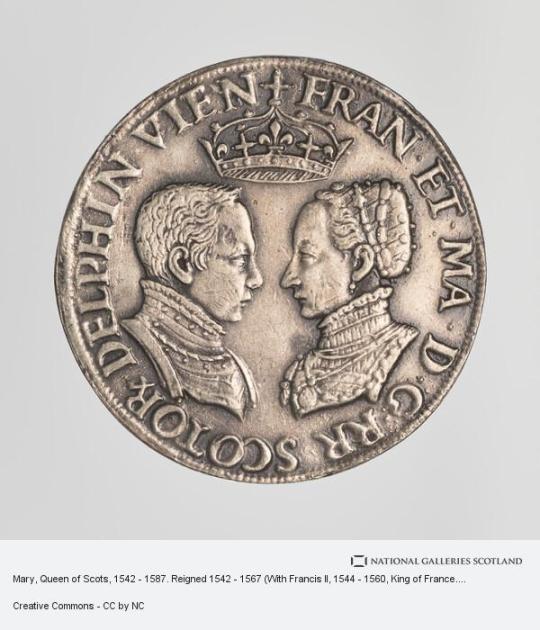
On December 5th 1560 King Francis II of France, the husband of Mary Queen of Scots, died.
Although not crowned it has to be remembered that Francis was also King consort of Scotland.
Francis was born on 19 January 1544, the eldest son of Henry II of France and Catherine de Medici, he was named for his grandfather, King Francis I.
When Francis was four years old, the Scots and French signed the Treaty of Haddington in July 1548 arranging the betrothal of Mary Queen of Scots and the dauphin Francis in return for French aid to expel the invading English. Mary Queen of Scots sailed from Dumbarton for France in the August of 1548 when she was but five years old. The young Queen was accompanied by her four Marys, the daughters of Scottish noble families, Mary Beaton, Mary Seton, Mary Fleming and Mary Livingston.
Mary spent the rest of her childhood at the court of her father-in-law, Henri II Her father-in-law, Henry II of France wrote 'from the very first day they met, my son and she got on as well together as if they had known each other for a long time'. Mary was a pretty child and brought up in the same nursery as her future husband and his siblings, became very attached to him. She corresponded regularly Mary of Guise , who remained in Scotland to rule as regent for her daughter. Much of her early life was spent at Château de Chambord. She was educated at the French court learning French, Latin, Greek, Spanish and Italian and enjoyed falconry, needlework, poetry, prose, horse riding and playing musical instruments.
Mary was the cosseted darling of the French court, the doting Henri II wrote 'The little Queen of Scots is the most perfect child I have ever seen.' He corresponded frequently with Mary of Guise, expressing his delight in his young daughter-in-law. Mary's maternal grandmother, Antoinette of Guise, in a letter to her daughter in Scotland, stated that she found Mary ' very pretty, graceful and self assured.'
Francis and Mary were married with spectacular pageantry and magnificence in the cathedral of Notre Dame, Paris, by the Cardinal Archbishop of Rouen, in the presence of Henry II, Queen Catherine de' Medici and a glittering throng of cardinals and nobles. The French courtier Pierre de Brantôme described Mary as ‘a hundred times more beautiful than a goddess of heaven … her person alone was worth a kingdom.’
Among the wedding guests was one, James Hepburn Earl of Bothwell. Francis was fourteen and Mary fifteen at the time, Francis then held the title King consort of Scotland until his death.
When Henri II was killed during a jousting contest, incidentally by Gabriel de Lorges, Comte de Montgomery, Captain of The Scots Guard, and a descendant of Alexander Montgomerie of Auchterhouse, Mary's young husband Francois ascended the throne. Francis was reported to have found the crown of France so heavy that the nobles were obliged to hold it in place for him.
The young Francis became a tool of Mary's maternal relations, the ambitious Guise family, who seized the chance for power and hoped to crush the Huguenots in France. The Huguenot leader, Louis de Bourbon, prince de Condé plotted the conspiracy of Amboise in March 1560, an abortive coup d'etat in which Huguenots surrounded the Château of Amboise and attempted to seize the King. The conspiracy was savagely put down, and its failure led to increase the power of the Guises. This alarmed the king 's mother, Catherine de Medici, who reacted by attempting to secure the appointment of the moderate Michel de L'Hospital as chancellor.
During the autumn of 1560 François became increasingly ill, and died from the complications of an ear condition, in Orléans, Loiret. Since the marriage had borne no children, the French throne passed to his 10-year-old brother, Charles IX. Mary was said to be grief-stricken Multiple diseases have been suggested as the cause of Francis' death, such as mastoiditis, meningitis, or otitis exacerbated into an abscess. Francis was buried in the Basilica of St Denis.
There was no place for the seventeen year old Mary, Queen of Scots in France, she prepared to return to her native Scotland with an uncertain future that would hold.
17 notes
·
View notes
Text
Events 7.22 (before 1900)
838 – Battle of Anzen: The Byzantine emperor Theophilos suffers a heavy defeat by the Abbasids. 1099 – First Crusade: Godfrey of Bouillon is elected the first Defender of the Holy Sepulchre of The Kingdom of Jerusalem. 1209 – Massacre at Béziers: The first major military action of the Albigensian Crusade. 1298 – Wars of Scottish Independence: Battle of Falkirk: King Edward I of England and his longbowmen defeat William Wallace and his Scottish schiltrons outside the town of Falkirk. 1342 – St. Mary Magdalene's flood is the worst such event on record for central Europe. 1443 – Battle of St. Jakob an der Sihl in the Old Zürich War. 1456 – Ottoman wars in Europe: Siege of Belgrade: John Hunyadi, Regent of the Kingdom of Hungary, defeats Mehmet II of the Ottoman Empire. 1484 – Battle of Lochmaben Fair: A 500-man raiding party led by Alexander Stewart, Duke of Albany and James Douglas, 9th Earl of Douglas are defeated by Scots forces loyal to Albany's brother James III of Scotland; Douglas is captured. 1499 – Battle of Dornach: The Swiss decisively defeat the army of Maximilian I, Holy Roman Emperor. 1587 – Roanoke Colony: A second group of English settlers arrives on Roanoke Island off North Carolina to re-establish the deserted colony. 1594 – The Dutch city of Groningen defended by the Spanish and besieged by a Dutch and English army under Maurice of Orange, capitulates. 1598 – William Shakespeare's play, The Merchant of Venice, is entered on the Stationers' Register. By decree of Queen Elizabeth, the Stationers' Register licensed printed works, giving the Crown tight control over all published material. 1686 – Albany, New York is formally chartered as a municipality by Governor Thomas Dongan. 1706 – The Acts of Union 1707 are agreed upon by commissioners from the Kingdom of England and the Kingdom of Scotland, which, when passed by each country's Parliament, leads to the creation of the Kingdom of Great Britain. 1793 – Alexander Mackenzie reaches the Pacific Ocean becoming the first recorded human to complete a transcontinental crossing of North America. 1796 – Surveyors of the Connecticut Land Company name an area in Ohio "Cleveland" after Gen. Moses Cleaveland, the superintendent of the surveying party. 1797 – Battle of Santa Cruz de Tenerife: Battle between Spanish and British naval forces during the French Revolutionary Wars. During the Battle, Rear-Admiral Nelson is wounded in the arm and the arm had to be partially amputated. 1802 – Emperor Gia Long conquers Hanoi and unified Viet Nam, which had experienced centuries of feudal warfare. 1805 – Napoleonic Wars: War of the Third Coalition: Battle of Cape Finisterre: An inconclusive naval action is fought between a combined French and Spanish fleet under Admiral Pierre-Charles Villeneuve of France and a British fleet under Admiral Robert Calder. 1812 – Napoleonic Wars: Peninsular War: Battle of Salamanca: British forces led by Arthur Wellesley (later the Duke of Wellington) defeat French troops near Salamanca, Spain. 1833 – The Slavery Abolition Act passes in the British House of Commons, initiating the gradual abolition of slavery in most parts of the British Empire. 1864 – American Civil War: Battle of Atlanta: Outside Atlanta, Confederate General John Bell Hood leads an unsuccessful attack on Union troops under General William T. Sherman on Bald Hill. 1893 – Katharine Lee Bates writes "America the Beautiful" after admiring the view from the top of Pikes Peak near Colorado Springs, Colorado. 1894 – The first ever motor race is held in France between the cities of Paris and Rouen. The fastest finisher was the Comte Jules-Albert de Dion, but the "official" victory was awarded to Albert Lemaître driving his three-horsepower petrol engined Peugeot.
2 notes
·
View notes
Text
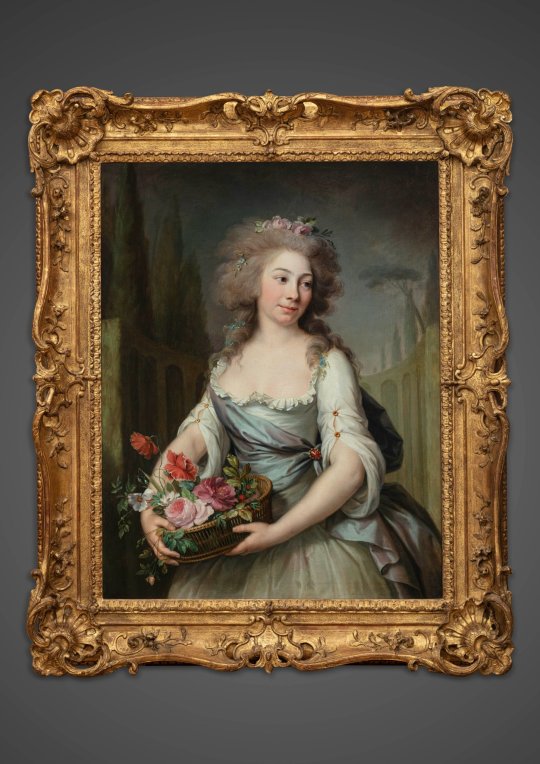
Claude-Jean-Baptiste HOIN
(Dijon 1750-1817)
PORTRAIT OF A YOUNG LADY HOLDING A FLOWER BASKET
H. 91 cm (36 in.), l. 72 cm (28 1⁄2 in.)
Within a gilded Louis XV style frame: H. 122 cm (48 in.), l. 99,5 cm (39 in.)
Provenance:
Comte de Rochefort, Paris c. 1963
Exhibition:
- Claude Hoin, peintre de Monsieur, Paris, galerie Weil, November-December 1934, n°2
- Claude Hoin, musée de Beaux-Arts, Dijon, 1963, n°2, ill.
This portrait of a young anonymous sitter can be considered the masterpiece of Claude-Jean-
Baptiste Hoin, a well-known artist during his lifetime, today unjustly forgotten. It may be
dated from his Parisian career around 1780.
Hoin was born in Dijon, Burgundy, on June 25th 1750, where his father was an important and
renowned doctor. He entered in 1768 the workshop of the architect Claude-François Devosge
in Dijon. In 1772 he moved to Paris and was trained by his fellow Burgundian artist Jean-
Baptiste Greuze. In 1776, he was appointed member of the Académie de Dijon. Two years
later, he entered several academies Lyon, Rouen and Toulouse.
Hoin also pursued an activity as an engraver after the work of Greuze and Fragonard.
In 1779, he exhibited for the first time in Paris at the Salon de la Correspondence. The same
year, he was made professor of drawing at the Royal Military School and then, in 1782, he
became the painter of Monsieur, brother of the king, future Louis XVIII. After the
revolutionary unrest, he exhibited at the Louvre in 1801 and 1802. He was also the curator of
the Museum of Dijon, where he died on 16 July 1817.
4 notes
·
View notes
Photo

Claudius Jacquand Joan of Arc taken to prison in Rouen, in the custody of the Comte de Ligny of Luxembourg
Oil on canvas, 1827
178 notes
·
View notes
Photo

Negotiations in Rouen.
This came from a fanfiction I made and some many years old contest on DeviantArt
Resume: During the Religious war in France, the Huguenots and the Catholics are making some negotiations in Rouen since the city is one of the most touched by the war.
England has sent some allies of the Huguenots to help negotiate. Among them is the Earl of Valentine who would have rather stayed at home in his laboratory but since he was ordered to go, he decided to bring along his daughter Isabella, hoping she will like the trip to France.
But negotiations being an adult thing, the Comte de Sorel, who is hosting this important reunion with both fighting sides at his mansion, ordered his son Raphael to keep the Earl’s daughter company since they are both the same age, eight years old. Not knowing what to do, Raphael sneaked into his father’s private study and took the family heirloom, Flambert to show it to Ivy before they quickly got out of there with the rapier to see it more in details.
Since they are the same age, they are both aristocrats and from countries not far from another, I think it could have been possible that they met like this. And I think it seems fun that the Catholic kid and the Protestant kid get along while the adults are probably yelling at each other at this instant.
They are both wearing some elegant Renaissance costumes and Ivy is wearing the haircut she has in some painting of her with her parents.
12 notes
·
View notes
Text
Jean-Antoine Chais anecdotes
After scouring every online source available to me, I've come across three rather dramatic anecdotes from the life of Jean-Antoine Chais (John Laurens's Geneva tutor who may or may not have written him a letter with homoerotic allusions).
For the first and third anecdotes below, I'm almost completely sure are the same Chais, given the accompanying biographical details. The second one I'm not as confident about, but the timing and location are a good fit, and there do not seem to be other people with this exact name around at the time.
The dead comedian
A few years later, in 1780, another troupe directed by Jean-Antoine Chais, lawyer, native of The Hague, was performing in Meaux; one of the actors died in an inn in the rue du Grand-Cerf. On November 25, Chais and René Sevin, known as Desplasses, a native of Sillé-le-Guillaume, declared to the city's police registry that their comrade and associate Ricarville, born in Rouen, aged sixty-six, had died suddenly on the 23rd; that “not wanting to expose themselves to the refusal of the priest of Saint-Nicolas to grant the deceased the rites of ecclesiastical burial, knowing moreover that this priest was authorised to do so by Mr. Garnier, vicar general, they requested to have their comrade buried in the foreigners’ cemetery.” After examination of Ricarville's passport, issued by the Comte de Grais, Minister Plenipotentiary of France at Hesse-Cassel, in whose service he had been for seventeen years, Police Lieutenant Decan gave his decree, and the burial took place - not in the foreigners’ cemetery, which was abandoned and covered in brambles, but in a particular property, without ceremony.
Source (my translation above, French transcription below)
Prison, part 1
The Maggs Brothers manuscript catalogue from 1912 includes the following entry:
Two documents signed by Louis XVI, one a Lettre de Cachet and the other an Order of Release. Dated respectively, Fontainebleau, 29th Oct 1783, and Versailles, 22nd April 1787.
The catalogue entry also contains the following explanatory note:
Two very interesting documents signed by the King, concerning Sieur Jean Antoine Chais. The earlier document addressed to "Our dear and well beloved the Superior of the Charity at Charenton,” is a letter of Cachet consigning Jean Antoine to the prison of Charenton, and the second, addressed to the same, some four years later, is an order for his release.
Source
There is no indication of what this Chais was sentenced for, but I'm reasonably certain this is the right Chais - given that he was in the Paris region from at least 1780 (see above) and wrote to John from there in 1781.
Prison, part 2
Denounced for having embezzled 15,000 livres from the Maison de Secours caisse [a private Parisian bank], a Mr. Jean-Antoine Chais, citizen of Geneva, was imprisoned on 25 Ventôse Year II* [15 March 1794] in Saint-Lazare. He had been linked to a female speculator and both had sold billets de secours [a form of paper currency] for half the amount of assignats [another form of paper currency]. In various accounts that he sent from his prison, he does not speak of this charge. His wife alluded to it in a petition, but without providing any details that could be noted. Chais was released on 9 Fructidor Year II* [26 August 1794].
*the dates given here are according to the French Republican calendar
Source (my translation above, French transcription below)
Transcription 1:
Quelques années plus tard, en 1780, une autre troupe dirigée par Jean-Antoine Chais, avocat, natif de la Haye, était en représentations à Meaux; un des comédiens mourut dans une auberge de la rue du Grand-Cerf. Le 25 novembre, Chais et René Sevin, dit Desplasses, natif de Sillé-le-Guillaume, déclarent au greffe de police de la ville que leur camarade et associé Ricarville, né à Rouen, âgé de soixante-six ans, est décédé subitement le 23; que “ne voulant pas s’exposer au refus du curé de Saint-Nicolas d’accorder au défunt les honneurs de la sépulture ecclésiastique, sachant d’ailleurs que ce prêtre y a été autorisé par M. Garnier, vicaire général, ils demandent à faire inhumer leur camarade dans le cimetière des étrangers.” Après examen du passeport de Ricarville, délivré par le comte de Grais, ministre plénipotentiaire de France à Hesse-Cassel, au service duquel il était resté pendant dix-sept ans, le lieutenant de police Decan donna son ordonnance, et l’inhumation eut lieu, non pas dans le cimetière des étrangers, qui était abandonné et couvert de ronces, mais dans une propriété particulière, sans cérémonie.
Transcription 2:
Dénoncé pour avoir détourné 15.000 livres de la Caisse de la Maison de Secours, un sieur Jean-Antoine Chais, citoyen de Genève, fut emprisonné le 25 ventôse an II à Saint-Lazare. Il aurait été lié avec une agioteuse et tous deux auraient vendu des billets de secours contre une somme moitié moindre d’assignats. Dans divers mémoires qu’il adressa de sa prison, il ne parle pas de cette inculpation. Sa femme y fit allusion dans une pétition, mais sans apporter d’éléments susceptibles d’être notés. Chais fut mis en liberté le 9 fructidor an II.
9 notes
·
View notes
Photo
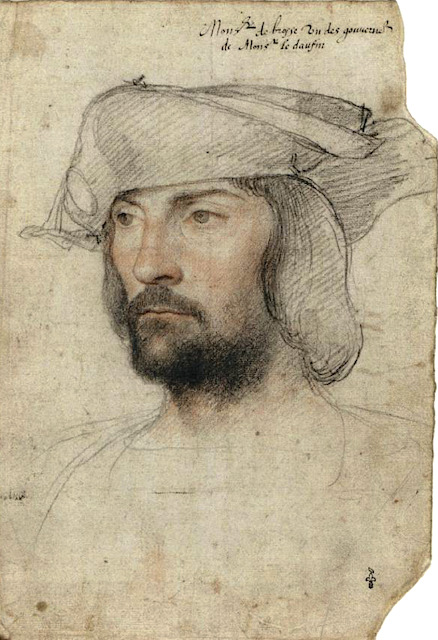
Jean Clouet (1475/85-1541)
Portrait de Jean de la Barre, 1520
Musée Condé, Chantilly, France Jean II de la Barre (né vers 1480 ? -† mars 1534), comte d'Étampes en 1526, sire de Véretz en 1525, vicomte de Bridiers , seigneur de Jouy, fut prévôt-bailli de Paris de 1523 à 1533 et lieutenant-général au gouvernement de Paris. Fidèle du roi François 1er qu'il suivit à Pavie en 1525 et dans sa captivité madrilène en 1525-1526, il fut nommé successivement Premier maître de la Garde-robe et Premier gentilhomme de la Chambre, prévôt de Paris, lieutenant du roi à Paris et en Ile-de-France, capitaine-bailli de Rouen, capitaine de Plessis-lez-Tours. Il reçut le comté d'Étampes à titre viager en 1526, marque insigne de la faveur royale. Il posa, le 19 août 1532, la première pierre de l'église Saint-Eustache à Paris, telle que l'on peut la voir encore aujourd'hui.
Plus de Men Portraits...
#jeanclouet#france#1520#menportraits#Jeandelabarre#muséecondé#françoispremier#renaissancefrançaise#frenchrenaissance#militaire#military#histoireducostume#historyofcostume#histoiredelart#historyofart#dessin#drawing#francsirousseaublogs
70 notes
·
View notes
Photo




History Meme || 6 Objects/Organizations ↬ Twelve Peers of France
I. Archevêque-duc de Reims
• First: Guillaume de Champagne (1135 – 1202; r. 1200–1202)
• Last: Alexandre Angélique de Talleyrand-Périgord (1736 – 1821; r. 1777–1790)
II. Évêque-duc de Langres
• First: Gauthier de Bourgogne (fl. 12th century; r. 1179–1180)
• Last: César-Guillaume de La Luzerne (1738–1821; r. 1770–1790)
III. Évêque-duc de Laon
• First: Roger Rozoy (d. 1207; r. 1200–1207)
• Last: Louis Hector Honoré Maxime de Sabran (1739 – 1811; 1777–1790)
IV: Évêque-comte de Beauvais
• First: Philippe de Dreux (c. 1158– 1217; r. 1200–1217)
• Last: François-Joseph de La Rochefoucauld-Bayers (1727 – 1792; r. 1772–1790)
V. Évêque-comte de Châlons
• First: Rotrou du Perche (d. 1207; r. 1190–1200)
• Last: Anne-Antoine-Jules de Clermont-Tonnerre (1748 – 1830; r. 1781–1790)
VI. Évêque-comte de Noyons
• First: Étienne de Villebéon de Nemours (d. 1221; r. 1200–1221)
• Last: Louis-André de Grimaldi de Cagnes (1736 – 1808; r. 1777–1790)
VII. Duc de Normandie
• First: Rollon de Normandie, comte de Rouen (860 –930; r. 911—927)
• Last: Charles de France (1446 – 1472; r. 1465–1469)
VIII. Duc d’Aquitaine
• First: Ramnulf Ier, comte de Poitiers (d. 866; r. 854–866)
• Last: Charles de France (1446 – 1472; r. 1469–1472)
IX. Duc de Bourgogne
• First: Robert Ier, duc de Bourgogne (1011 – 1076; r. 1032–1076)
• Last: Charles “le Téméraire”, duc de Bourgogne (1433 – 1477; r. 1467–1477)
X. Comte de Flandre
• First: Baudouin Ier, marquis de Flandre (d. 879; r. 863–879)
• Last: Holy Roman Emperor Karl V (1500 – 1558; r. 1506–1526)
XI. Comte de Champagne
• First: Thibaut Ier, comte de Blois (913 – 975; r. 917–975)
• Last: Jehanne II de Navarre (1311 – 1349; r. 1316–1318)
XII. Comte de Toulouse
• First: Raimond Ier, comte de Toulouse (d. 865; r. 852–865)
• Last: Jehanne, comtesse de Toulouse (1220 – 1271; r. 1249–1271)
57 notes
·
View notes
Photo






Henry II and some of the events of 1154 according to “Court, Household and Itinerary of K. Henry II”.
“October 25. King Stephen dies.
December 7. Henry, Duke of Normandy, embarked at Barfleur for England. The 'Duchess Alianora' accompanied him, as did his two brothers, Geoffrey and William.
Dec. 8. Duke Henry landed near the New Forest. [He] next proceeded to Winchester, where several Winchester nobles met him, to do fealty.
King Henry crowned at Westminster by Theobald Archbishop of Canterbury. There were present Roger Archbishop of York, Richard Bishop of London, Robert Bishop of Lincoln, Walter Bishop of Chester, Gilbert Bishop of Hereford, Robert Bishop of Bath, John Bishop of Winchester (read Worcester), Robert Bishop of Exeter, Hilary Bishop of Chichester, Joceline Bishop of Salisbury, Walter Bishop of Rochester, Nigel Bishop of Ely, William Bishop of Norwich, Hugh Bishop of Durham, Adelulf Bishop of Carlisle, Hugh Archbishop of Rouen, Philip Bishop of Baieux, Arnulf Bishop of Liseux, Herbert Bishop of Avranches, and Theodoric Comte of Flanders.
At Westminster, and (as presumed) immediately after his coronation, K. Henry expedited the Charter whereby he gives to William, Earl of Arundel, the Castle and Honour of Arundel and the tertium denarium of Sussex.
Witnesses, Theobald, Abp of Canterbury; Hilary, Bishop of Chichester; Nigel, Bishop of Ely and Chancellor; William, the King's brother; Boger (read Reginald), Earl of Cornwall; Hugh, Earl of Norfolk ; Henry de Essex, Constable ; Richard de Humez, Constable ; Richard de Lucy ; Warm fitz Jerold, Chamberlain; Josceline de Bailliol; Robert de Dunestanvill; Robert de Curci.
At Westminster also, by another charter (of apparently the same date), K. Henry confirms to William, son of Robert FitzWalter of Windsor, the lands of his late father. Witnesses, Earl Reginald (of Cornwall) ; Robert, Earl of Leicester ; Hugh, Earl of Norfolk ; Henry de Essex, Constable; Richard de Humez, Constable ; Joceline de Bailliol.
Dee. 25. K. Henry held his Court at Bermondsey.”
Fancast: Tom Hiddleston as King Henry II of England and Tony Curran as King Stephen.
#gifs are not mine to claim#only to illustrate history#henry ii of england#henry curtmantle#henry of anjou#henry fitzempress#henry ii#king henry ii#tom hiddleston#tony curran#king stephen#house of normandy#house of anjou#plantagenet dynasty
4 notes
·
View notes
Text

OYEZ OYEZ !
Quel succès pour Draco Humoriste et son spectacle de magie spécial Halloween "le manoir du comte Draco" 😀🤪🤪
La séance de 14h30 est déjà COMPLETE !
On vient d'en rajouter une à 11h le 31 octobre 👍🎃🎃🎃
Alors ne trainez pas pour réserver c'est ici et nulle part ailleurs :
https://theatrealouest.com/rouen/spectacle/reserver-places/draco-le-manoir-du-comte-draco
#humour #spectacleenfant #toussaint2022 #halloween2022 #normandietourisme #lesptitsnormands #rouen #theatrealouestrouen #theatrealouest
1 note
·
View note
Text


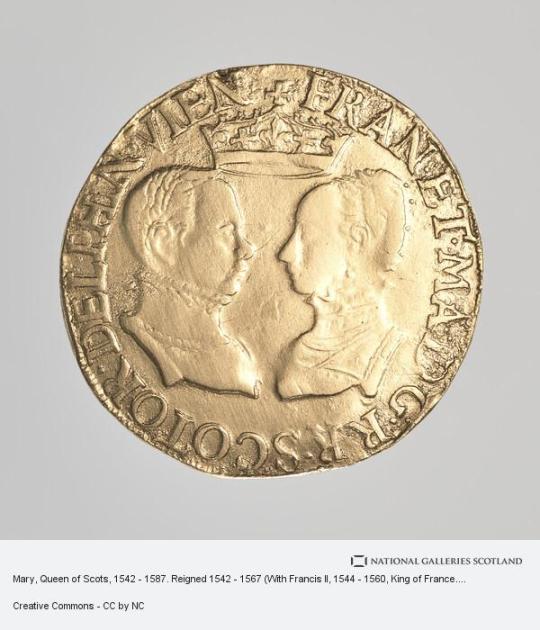
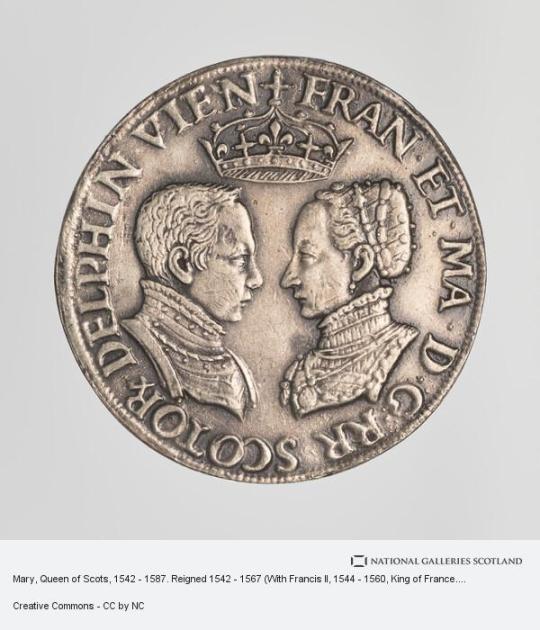
On December 5th 1560 King Francis II of France, the husband of Mary Queen of Scots, died.
Although not crowned it has to be remembered that Francis was also King consort of Scotland.
Francis was born on 19 January 1544, the eldest son of Henry II of France and Catherine de Medici, he was named for his grandfather, King Francis I.
When Francis was four years old, the Scots and French signed the Treaty of Haddington in July 1548 arranging the betrothal of Mary Queen of Scots and the dauphin Francis in return for French aid to expel the invading English. Mary Queen of Scots sailed from Dumbarton for France in the August of 1548 when she was but five years old. The young Queen was accompanied by her four Marys, the daughters of Scottish noble families, Mary Beaton, Mary Seton, Mary Fleming and Mary Livingston.
Mary spent the rest of her childhood at the court of her father-in-law, Henri II Her father-in-law, Henry II of France wrote 'from the very first day they met, my son and she got on as well together as if they had known each other for a long time'. Mary was a pretty child and brought up in the same nursery as her future husband and his siblings, became very attached to him. She corresponded regularly Mary of Guise , who remained in Scotland to rule as regent for her daughter. Much of her early life was spent at Château de Chambord. She was educated at the French court learning French, Latin, Greek, Spanish and Italian and enjoyed falconry, needlework, poetry, prose, horse riding and playing musical instruments.
Mary was the cosseted darling of the French court, the doting Henri II wrote 'The little Queen of Scots is the most perfect child I have ever seen.' He corresponded frequently with Mary of Guise, expressing his delight in his young daughter-in-law. Mary's maternal grandmother, Antoinette of Guise, in a letter to her daughter in Scotland, stated that she found Mary ' very pretty, graceful and self assured.'
Francis and Mary were married with spectacular pageantry and magnificence in the cathedral of Notre Dame, Paris, by the Cardinal Archbishop of Rouen, in the presence of Henry II, Queen Catherine de' Medici and a glittering throng of cardinals and nobles. The French courtier Pierre de Brantôme described Mary as ‘a hundred times more beautiful than a goddess of heaven … her person alone was worth a kingdom.’
Among the wedding guests was one, James Hepburn Earl of Bothwell. Francis was fourteen and Mary fifteen at the time, Francis then held the title King consort of Scotland until his death.
When Henri II was killed during a jousting contest, incidentally by Gabriel de Lorges, Comte de Montgomery, Captain of The Scots Guard, and a descendant of Alexander Montgomerie of Auchterhouse, Mary's young husband Francois ascended the throne. Francis was reported to have found the crown of France so heavy that the nobles were obliged to hold it in place for him.
The young Francis became a tool of Mary's maternal relations, the ambitious Guise family, who seized the chance for power and hoped to crush the Huguenots in France. The Huguenot leader, Louis de Bourbon, prince de Condé plotted the conspiracy of Amboise in March 1560, an abortive coup d'etat in which Huguenots surrounded the Château of Amboise and attempted to seize the King. The conspiracy was savagely put down, and its failure led to increase the power of the Guises. This alarmed the king 's mother, Catherine de Medici, who reacted by attempting to secure the appointment of the moderate Michel de L'Hospital as chancellor.
During the autumn of 1560 François became increasingly ill, and died from the complications of an ear condition, in Orléans, Loiret. Since the marriage had borne no children, the French throne passed to his 10-year-old brother, Charles IX. Mary was said to be grief-stricken Multiple diseases have been suggested as the cause of Francis' death, such as mastoiditis, meningitis, or otitis exacerbated into an abscess. Francis was buried in the Basilica of St Denis.
There was no place for the seventeen year old Mary, Queen of Scots in France, she prepared to return to her native Scotland with an uncertain future that would hold.
4 notes
·
View notes
Text
Events (before 1900)
838 – Battle of Anzen: The Byzantine emperor Theophilos suffers a heavy defeat by the Abbasids. 1099 – First Crusade: Godfrey of Bouillon is elected the first Defender of the Holy Sepulchre of The Kingdom of Jerusalem. 1209 – Massacre at Béziers: The first major military action of the Albigensian Crusade. 1298 – Wars of Scottish Independence: Battle of Falkirk: King Edward I of England and his longbowmen defeat William Wallace and his Scottish schiltrons outside the town of Falkirk. 1342 – St. Mary Magdalene's flood is the worst such event on record for central Europe. 1443 – Battle of St. Jakob an der Sihl in the Old Zürich War. 1456 – Ottoman wars in Europe: Siege of Belgrade: John Hunyadi, Regent of the Kingdom of Hungary, defeats Mehmet II of the Ottoman Empire. 1484 – Battle of Lochmaben Fair: A 500-man raiding party led by Alexander Stewart, Duke of Albany and James Douglas, 9th Earl of Douglas are defeated by Scots forces loyal to Albany's brother James III of Scotland; Douglas is captured. 1499 – Battle of Dornach: The Swiss decisively defeat the army of Maximilian I, Holy Roman Emperor. 1587 – Roanoke Colony: A second group of English settlers arrives on Roanoke Island off North Carolina to re-establish the deserted colony. 1594 – The Dutch city of Groningen defended by the Spanish and besieged by a Dutch and English army under Maurice of Orange, capitulates. 1598 – William Shakespeare's play, The Merchant of Venice, is entered on the Stationers' Register. By decree of Queen Elizabeth, the Stationers' Register licensed printed works, giving the Crown tight control over all published material. 1686 – Albany, New York is formally chartered as a municipality by Governor Thomas Dongan. 1706 – The Acts of Union 1707 are agreed upon by commissioners from the Kingdom of England and the Kingdom of Scotland, which, when passed by each country's Parliament, leads to the creation of the Kingdom of Great Britain. 1793 – Alexander Mackenzie reaches the Pacific Ocean becoming the first recorded human to complete a transcontinental crossing of North America. 1796 – Surveyors of the Connecticut Land Company name an area in Ohio "Cleveland" after Gen. Moses Cleaveland, the superintendent of the surveying party. 1797 – Battle of Santa Cruz de Tenerife: Battle between Spanish and British naval forces during the French Revolutionary Wars. During the Battle, Rear-Admiral Nelson is wounded in the arm and the arm had to be partially amputated. 1802 – Emperor Gia Long conquers Hanoi and unified Viet Nam, which had experienced centuries of feudal warfare. 1805 – Napoleonic Wars: War of the Third Coalition: Battle of Cape Finisterre: An inconclusive naval action is fought between a combined French and Spanish fleet under Admiral Pierre-Charles Villeneuve of France and a British fleet under Admiral Robert Calder. 1812 – Napoleonic Wars: Peninsular War: Battle of Salamanca: British forces led by Arthur Wellesley (later the Duke of Wellington) defeat French troops near Salamanca, Spain. 1833 – The Slavery Abolition Act passes in the British House of Commons, initiating the gradual abolition of slavery in most parts of the British Empire. 1864 – American Civil War: Battle of Atlanta: Outside Atlanta, Confederate General John Bell Hood leads an unsuccessful attack on Union troops under General William T. Sherman on Bald Hill. 1893 – Katharine Lee Bates writes "America the Beautiful" after admiring the view from the top of Pikes Peak near Colorado Springs, Colorado. 1894 – The first ever motor race is held in France between the cities of Paris and Rouen. The fastest finisher was the Comte Jules-Albert de Dion, but the "official" victory was awarded to Albert Lemaître driving his three-horsepower petrol engined Peugeot.
0 notes
Text
Tuesday, 10 April 1827
6 40/60
12 5/60
.. [Anne’s period] my bowels pretty well – at breakfast at 8 – went out at 8 35/60 – met Mrs B– (Barlow) at the top of the stairs – sent George at 7 to say I should be ready in an hour, and sent him again at 8 to ask her to come as the 1st answer was that she was ready at 7 – we walked to No. 12 rue du faubourg St. Denis – the vehicle for St. Denis gone – would be another at 10 – could not wait – walked forwards – overtook the diligence vehicle about 1/2 way between the Porte St. Denis and the barrier, and got into it at 9 25/60 – alighted at St. Denis at 10 5/60 – we were in the back part with 2 apparently workmen and a well dressed respectable looking well informed young man – who, among other things, told us there was to be a government company for supplying every house in Paris with water by stop-cocks opening into the different apartments – all the streets of Paris to be 35 feet (French) wide besides trottoirs on each side –
turned to our left along the canal – at la Briche at 10 40/60 – sat down in the grounds of the next house to the late Mr Andrew Barlow’s at Epinay sur Seine at 11 1/4 – beautiful view – the steeple of St. Denis – Montmartre – the dome of the Invalides at Paris, Mont Valerien, several villages St. Ouen, Clichy, Anières …. the white sided range of Mont Orgement with Argenteuil in the distance at its foot – sat contemplating this view about 20/60 hour – then went up to Mrs Barlow’s house – apparently wanting repairs – saw the portière – wife to the gardener Employed by Madame Leconte, an elderly lady, who took the house of the widow Mrs B– (Barlow) for 3 years – 2 of them Expired – the portière thought the rent 3 or 4 thousand francs per annum – the garden ground around the house not large, but neat and pretty – sauntered slowly thro’ the village (having left the side of the river to go up to St. Gratien), – one of the nicest French villages I have seen –
left the village at 11 50/60 – pursuing the high road to Pontoise and Rouen – having Taken with us the map of the environs of Paris open in our hand, saw beyond Sannois, ‘l’hermitage’, fancying it the hermitage of Rousseau, we instead of leaving the hight road for St. Gratien, went forwards to Sannois, part of it very picturesquely situated at the foot of the north side of Mont Orgement the highest summit of which is here surmounted by 3 wind mills – all the way from Epinay fine view of Montmorency and the neighbouring villages, and of course of the celebrated vale of Montmorency – too Extended – on entering Sannois at 12 33/60, a very civil good humoured looking woman told us the the hermitage near Sannois was merely a farm – Rousseau’s hermitage near Montmorency – went into the woman’s house – very nice and clean – rested there 1/2 hour – the woman looked happy, and in good circumstances – her husband a mason, having houses of his own – had just built one next door – 2 stories – 4 or 5 rooms besides garrets – 500 or 600 francs a year – but – living would be as dear as in Paris on account of being so near –
on leaving Sannois at 1 33/60 which the woman said was doubled in size within these 20 years, we strode across the country to St. Gratien – distant thunder at intervals – and black clouds hovering about – all the people busy propping the pines – if the warm weather continued they would be in leaf in a few days – all the peasants (many more women than men) looked cheerful and happy – one of the women told us there was going to be an orage, but we had plenty of time to get to St. Gartien – a niceish little village – still thundering, but we should have plenty of time to get to Enghien – pursued our way along the little lake (Etaing de Montmorency, and a very little way from St. Gratien) and got to the Bains d’Enghein at 2 33/60 (just an hour from Sannois) – Looking down along the lake from here, the vale of Montmorency is really pretty But the proprietor of the lake, for the sake of making himself a shady drive, has planted a belt of poplars all round the lake, and placed a sort of dress café in the middle of it (standing apparently in the middle of the water, the foundation being hid) to which people go in a boat to take refreshments, and the whole is too much tricked out – the Baths and apartments, a largeish pile of buildings undergoing repairs – and not to be seen – to be opened on the 1st of May – an apartment of a little salon and 2 little bedrooms let a 6 francs per day, to be taken for less than 15 days – dinner for ladies at the table d’hôte 3/50 a head – pretty garden – an observatory from the top of which there must be a fine view – but locked up – bottling of the water – 12 sols a bottle – smelt like Harrogate water – but not purgativethe man said – tonic strengthening to the stomach – the baths very good for rheumatic and gout – the the place looked low and damp – they say, the vale of Montmorency is damp on account of the lake – 2 establishments of baths, but both belonging to the same proprietor –
sauntered slowly thro’ this now become village to the ‘maison blanche’ a little auberge on the St. Lu road (about 2 lieues from St. L– Lu) to take places for Paris – the clouds blacker than ever – got to the maison blanche at 3 5/60 – very civil good humoured looking woman – said we might get to Montmorency (about 10 minutes off) before the orage – could have a good dinner at Monsieur le Duc’s in the Place du Marché – she had only 3 Sauscisses de Campagne, and eggs and bacon and vin de Campagne – ordered her to get these ready in 1/2 hour, resolving not to go far from the house – Mrs B– (Barlow) had had a sol roll at Sannois – I had had nothing since breakfast at 8– and as we should not be off for Paris till 6, I thought it best not to wait for dinner at home – we walked out a little, but the clouds blacker and blacker sent us in, and we had just sat down to our saucisses etc (the wine rather sour but we drank the whole demie bouteille) at 3 35/60 when it began to rain heavily, and we were glad of our quarters in the little room upstairs with 2 beds in it where slept the master and mistress of their grown up daughter – enjoyed our dinner – and at 4 10/60 we both lay down on the young lady’s bed, and lay, sleeping most of the time, till 5 1/2 – then got up – paid 2 francs our dinner and got ready to be off – told the woman we might perhaps come and dine with her again by and by –
got into the St. Lu velocifère? (one compartment carrying 9 inside on 3 seats) – at 6 5/60 – 4 men and ourselves – passed the late Comte de Lacepèdés place (nice looking house) at St. Gratien on our right at a little distance – Montmagny and 2 or 3 other villages at a little distance on our left – Stopt at St. Denis (for a few minutes) at 6 40/60 – It being all but fair when we got out at No. 12 rue du faubourg St. Denis, walked home – when we had got a little on the side the Passage des Panoramas, it began to rain again pretty smartly – very dirty on the boulevards –
saw Mrs B– (Barlow) to her own door, and got home at 8 1/2 – my aunt still sitting after dinner – changed my shoes and stockings etc – put on my pelisse, and went into the dining room at 8 3/4 – Madame Sené came almost immediately and staid till after 9 – being hot and thirsty I enjoyed dessert and warm wine – and water – my aunt had been rather low today – her legs or feet swell more – and MacDonald found another bug this morning – we sat till 10 20/60, and I then came to my room – Settled with George –
those who come to Paris, and have time for country Excursions should entirely see les Bains d’Enghein – Mrs Barlow and I perfectly quiet while lying ddown after dinner on going to the place at Sannois I found my cousin coming expected yesterday at dinner I felt him come on going to bed tonight my linen a good deal stained –
left margin: Fahrenheit 58 at 8 a.m. 56 at 10 1/2 p.m. rain during last night raining at 6 this morning
fine morning at 7 – about noon occasional distant Thunder but very fine about 1 the clouds rather black but seeming as if they might disperse – the thunder came nearer – about 3 1/2 p.m. the storm came on – heavy rain but no thunder or lighting – the rain continued more or less for the rest of the day – It had began to rain here (in Paris) before 2 p.m. –
reference number: SH:7/ML/E/10/0078, SH:7/ML/E/10/0079
1 note
·
View note
Text
This is the most consequential injury in sports history
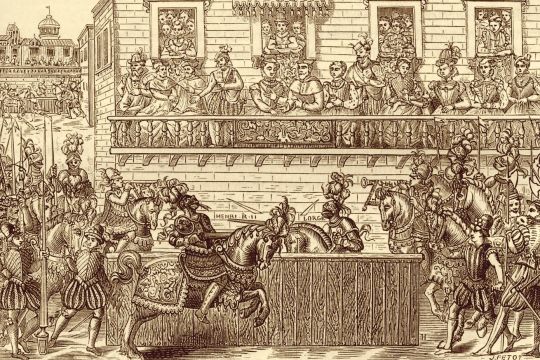
The death of King Henry II in a jousting tournament sparked a series of wars that lasted 32 years and killed three million people
On June 30th, 1559, King Henry II of France entered the lists at a three-day tournament celebrating the marriages of his sister and daughter*. Henry’s presence in the lists was unremarkable. He was a familiar presence at tournaments, sporting the colors of his mistress over his heavy jousting armor, and he was a formidable, skilled opponent as well. Late in the day, however, he was nearly knocked off his horse by Gabriel Montgomery, the captain of his personal bodyguard.
*To different people, not each other. Just in case that wasn’t clear.
That might have been the end of the action, but the king was enjoying himself, and asked for another bout. Montgomery refused. But Henry II insisted, despite the protests of his wife, Catherine de’ Medici, and the pair took another tilt.
This time things went badly wrong. Montgomery’s lance pierced the king’s helmet. Jousting lances were built to shatter on impact, as a protection against impalement, and that’s exactly what happened here. Unfortunately for King Henry, it did so after entering his helmet, dissolving into a mist of splinters that ripped into his face and neck. The longest drove directly through the king’s right eye and penetrated into his brain.
Before King Henry lost consciousness the distraught Montgomery offered his own head as punishment but was turned down. Doctors rushed to extract the splinters, hoping that they might effect a recovery, but sepsis quickly set in and nothing more could be done. Ten days later, King Henry II died in what I can only assume was agony. The Dauphin, 15-year-old Francis, assumed the throne.
The tournament did not exactly have an unblemished history. When they were first introduced, they were little better than the battles they were intended to mock. Knights could capture their opponents and hold them to ransom*. Deaths and injuries were common, exasperating the Church to the point that, as Maurice Keen relates in Chivalry, the Archbishop of Magdeburg excommunicated everyone who participated.
*These ransoms were often lucrative. Some individuals, most notably William Marshall, actually earned their living this way. By any reasonable standard, they were therefore professional athletes.
The great 12th-century poet Chrétien de Troyes describes the confusing melee of his era (from Keen):
On either side the ranks tremble and a roar rises from the fight. The shock of lances is very great. Lances break and shields are riddled, the hauberks receive bumps and are torn asunder, saddles go empty and horsemen tumble, while the horses sweat and foam. Swords are quickly drawn on those who fall noisily, and some run to receive the promise of a ransom, others to stave off this disgrace.
But it’s important to remember that by the time of Henry’s death, the tournament had been around for hundreds of years, and had evolved into something completely unrecognizable. The ‘little battles’ of the 12th and 13th centuries had transformed into ritual combat, with the ritual of the joust first separating from and then supplanting the martial mess of the general melee.
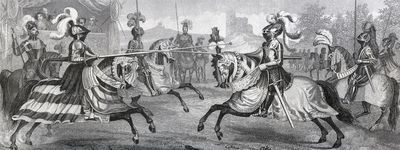
Universal Images Group via Getty
Jousts were far from safe, but they were far less lethal than tournaments at large. Thanks to pressure from the Church as well as the chivalric tendency towards showy affairs of honor, jousts became increasingly ritualized and elaborate. Barriers were placed between contestants, allowing greater control of both horse and lance. As war moved away from the knight and his tools, jousts were free to develop as an end in and of themselves; Henry II’s specialized armor, which would have been useless on the battlefield, was designed for almost total protection at the tilt. Almost.
By the 16th century, jousting was an anachronism. Knightly combat was a thing of the past, chivalry no longer much pretended at. The sport staggered on through sheer inertia, but it had no grounding in anything but noble nostalgia, and was ripe for a crisis. The death of a king during a tournament was such a crisis; 1559 marks, in a very real sense, the end of the sport.
The death of a whole sport was one thing. But Henry II’s fate didn’t just impact the future of jousting. As it turned out, he was sitting on a powder keg, and without a powerful king on the throne, it ignited.
French factionalism was nothing new. Mutual antagonism between the reigning house of Valois and the the Dukes of Burgundy had left the country perilously close to defeat in the Hundred Years’ war a century prior to Henry II’s death. This time there were two major families vying for dynastic power: the Houses of Condé and Guise. But unlike previous spats, history had thrown a new and entirely unexpected wrench into the equation.
In 1517, centuries of nearly-undisputed* confessional unity in Western Europe came to a juddering halt when an achingly horny Augustinian monk suffered a crisis of faith. Martin Luther’s resolved that crisis through a moment of inspiration. Humanity is not absolved of sin via good works. Salvation is attainable through faith, and faith alone. The message spread like wildfire; the Protestant Reformation had begun.
*One rare exception was the Cathars, a sect which flourished in the French Pyrenees before being annihilated in the Albigensian Crusade. I mention them mostly because I used to live near their strongholds, which are fiendishly cool.
The Reformation gave the rivalries between the great houses a confessional dimension which had never before existed. France was on the front lines, a meeting of the Catholic south, Lutheran Germany, and the Calvinists ensconced in Switzerland. Henry II had responded to the rise of the French Protestant ‘Huguenots’ with brutal repressions — he was a strong king, not a good one — which did nothing to halt the conversions, including many from the nobility.
The situation deteriorated quickly. The Guises dominated at court to a degree which provoked enormous jealousy, leading to a 1560 conspiracy to kidnap King Francis II and eliminate their influence. The conspiracy was detected, and the Guises decided that the Prince of Condé, a Huguenot, was to blame. He was arrested and scheduled for execution, but was released upon the young king’s death that December.
At this point, the French throne passed to Henry II’s second son, Charles IX. He was ten years old. De’ Medici took over as regent, and attempted to smooth over relations between the warring houses while also ensuring that neither party could attain enough power to overwhelm her or her son. She failed, and the July Edict of 1561, which promised a form of religious tolerance, was ignored. The country fell apart on doctrinal lines, descending rapidly into a civil war.

Photo By DEA / G. DAGLI ORTI/De Agostini via Getty Images
The conflict included events that still invoke horror today: the St. Bartholomew’s Day massacre, for instance, was a country-wide riot in 1572 which led to deaths of as many as 30,000 Huguenots, radicalizing the remainder and crystalizing mistrust of Catholics across Europe (for good reason — Phillip II of Spain, soon to launch the Armada against Elizabethan England, found the massacre so amusing that he laughed for what is said to be the only time in his entire life).
This isn’t the time to recapitulate decades of French civil war, which would take forever and is also a region of history with which I’m not intimately familiar. But to take a panoramic view, the Wars of Religion lasted 32 years, three kings and claimed the lives of something like three million people.
Much like the assassination of Archduke Franz Ferdinand in 1914, Henry II’s accident can’t be considered strictly causal to the conflict that followed. The Reformation had set the stage for religious warfare across the whole continent (the biggest, the Thirty Years War (1618-1648), made French efforts look paltry by comparison), and even the slightest pretext was going to be enough to set it off. Had Henry survived, it seems vanishingly unlikely that France would have escaped the conflagration which the friends and enemies of Reform had engineered together.
But the lack of royal power was a key factor in prolonging and amplifying the wars. Without that tournament — ironically, the weddings it celebrated marked the end of war between France and Hapsburg Austria — the shape and duration of the French Wars of Religion might have changed dramatically. It’s not a stretch, then, to call his death the most consequential sports injury in history.
The comte de Montgomery, meanwhile, ended up joining the Huguenots, survived the St. Bartholomew’s Day massacre and fought the Catholics at Rouen and La Rochelle before his capture in Normandy. The Queen regent had never forgiven him for her husband’s death, and she decided to take him up on the offer he’d made in 1559. I imagine that, as the axe descended, Montgomery felt some regrets over his poor aim.
1 note
·
View note
Photo

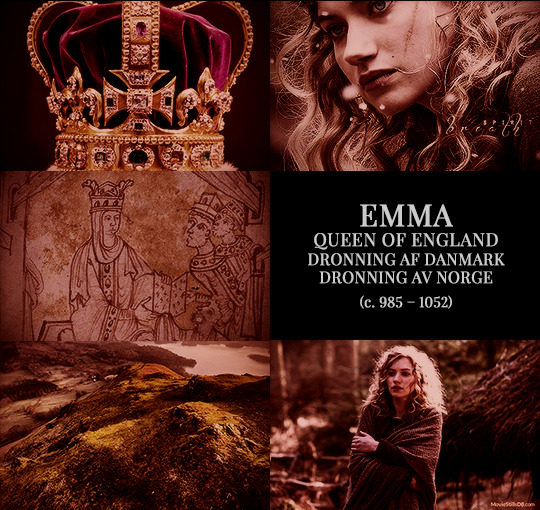
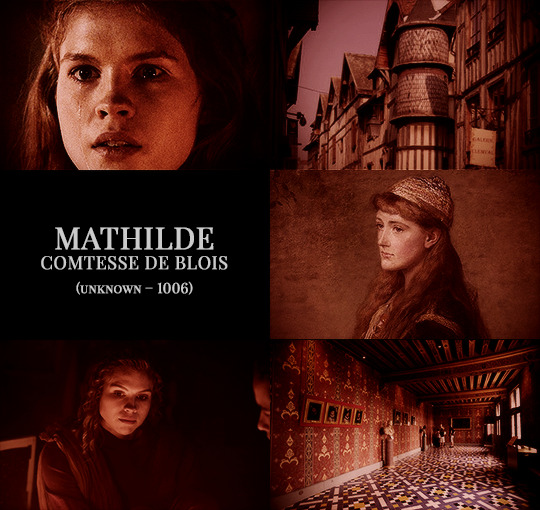
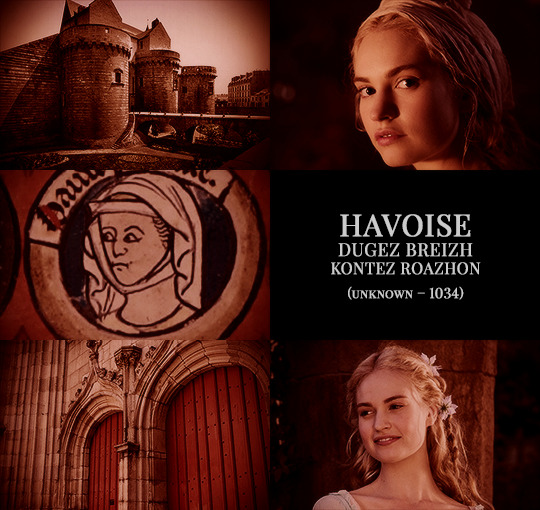
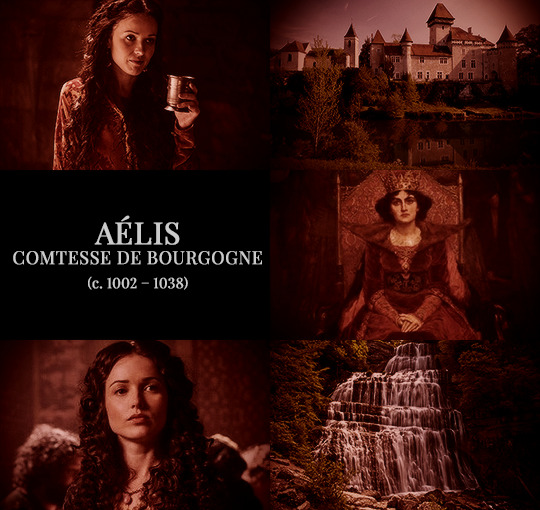

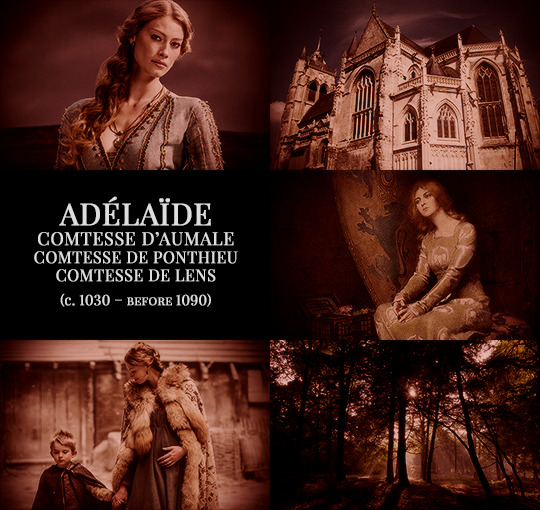
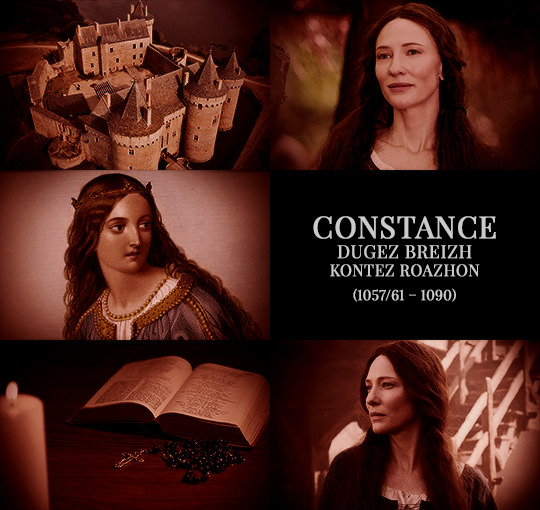
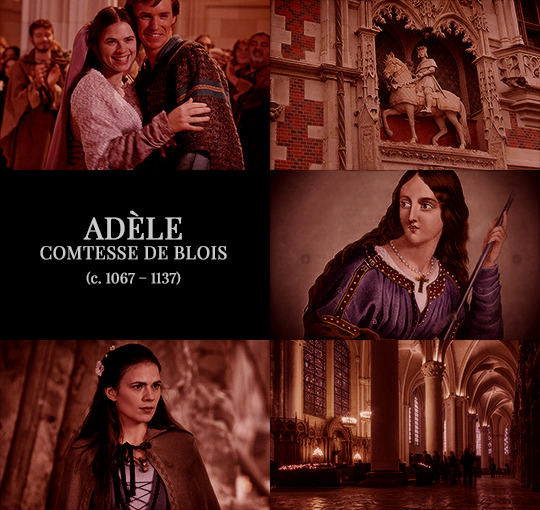
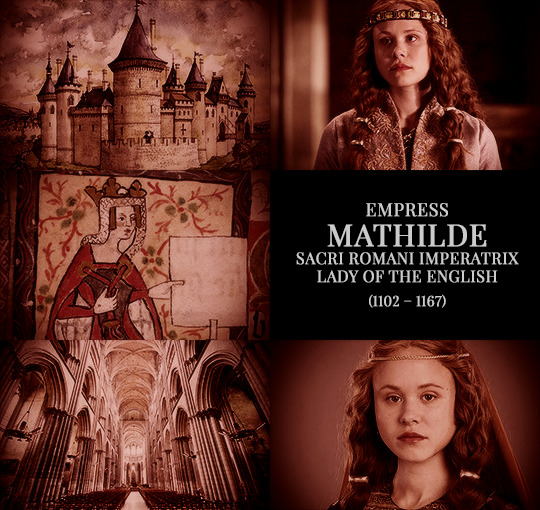
Women of the House of Normandy
Adèle, duquessa d’Aquitània. Daughter of Rollo, comte de Rouen and Poppa de Bayeux. Mother of Adelaïda de Peitieus, reine des Francs.
Emma, Queen of England. Daughter of Richard Ier, comte de Rouen and Gunnora. Mother of Godgifu, comtesse du Vexin and Gunhild af Danmark, Sacri Romani Imperatrix.
Mathilde, comtesse de Blois. Daughter of Richard Ier, comte de Rouen and Gunnora.
Havoise, dugez Breizh. Daughter of Richard Ier, comte de Normandie and Gunnora. Ancestress of Hawiz, dugez Breizh.
Aélis, comtesse de Bourgogne. Daughter of Richard II, duc de Normandie and Judit Breizh. Mother of Aubrée de Bourgogne, duchessa di Puglia e Calabria. Ancestress of Sibylle de Bourgogne, duchesse de Bourgogne; Emma de Hauteville; Adelaide di Savoia, reine des Francs; and Constanza de Castilla, reine des Francs.
Aénor, comtesse de Flandre. Daughter of Richard II, duc de Normandie and Judit Breizh. Mother of Judith de Flandre, Countess of Northumbria. Ancestress of Judith von Bayern, Herzogin von Schwaben.
Adélaïde, comtesse d’Aumale. Daughter of Robert Ier, duc de Normandie. Mother of Adélaïde de Ponthieu and Judith de Lens, Countess of Northampton. Ancestress of Maud of Huntingdon, Queen of Scots and Hawise, comtesse d’Aumale.
Constance, dugez Breizh. Daughter of William the Conqueror and Mathilde de Flandre.
Adèle, comtesse de Blois. Daughter of William the Conqueror and Mathilde de Flandre. Mother of Adèle de Blois, dame de Montlhéry; Lucie-Mahaut de Blois, Countess of Chester; Agnès de Blois, dame de Puiset; Alais de Blois, comtesse de Joigny; and Aénor de Blois, comtesse de Vermandois.
Mathilde, Sacri Romani Imperatrix. Daughter of Henry I of England and Edith-Mathilde of Scotland. Grandmother of Matilda of England, Herzogin von Sachsen und Bayern; Eleanor of England, reina de Castilla; and Joan of England, regina di Sicilia.
#house of normandy#medieval#historyedit#french history#english history#european history#women's history#history#royalty aesthetic#nanshe's graphics
146 notes
·
View notes